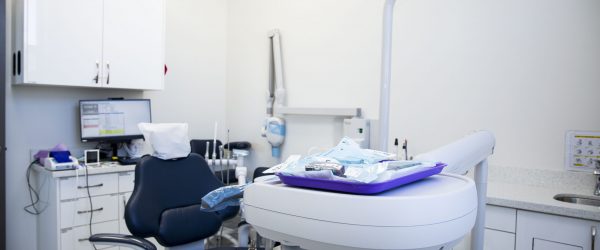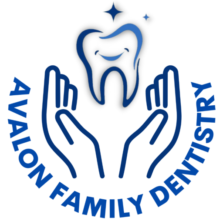Dental Exams

Dental exams include the following:
- Examination of diagnostic x-rays (radiographs):
X-rays are utilized for several reasons in dental practice. They help to detect problems in the mouth that are not visible to the human eye. For example, they can show cavities between the teeth or early signs of tooth decay. Additionally, x-rays can help dentists identify impacted teeth, such as wisdom teeth that are coming in sideways and causing crowding, or other issues that may require treatment.
Jaw problems, such as temporomandibular joint disorder, which can cause pain and difficulty with chewing are easily diagnosed. For patients that are considering getting braces, x-rays can be used to help determine the best course of treatment and help evaluate the progress of orthodontic treatment. X-rays have proven pivotal for finding deterioration, malignancies, cysts, and bone loss. The placements of the tooth and its roots, as well as any other deformities, can be found via bitewings, PA views, and panoramic X-rays.
- Gum disease evaluation:
Your gums will be checked by the dentist to look for inflammatory symptoms including redness, swelling, or bleeding. To determine the degree of gum recession and the presence of pockets where germs can gather, they will also evaluate the depth of the crevices between the gums and teeth. A dentist may also analyze a patient’s risk of acquiring gum disease and the strength of their bite using specialist tools. If gum disease is discovered, a treatment plan will be recommended, which may include scaling and root planning, antibiotics, or surgery. Early treatment reduces the need for more invasive and expensive procedures in the future.
- Examination of tooth decay:
The condition of each tooth’s surface will be examined for dental decay. Any current restorations, like dental crowns, fillings, etc. will be inspected. Plaque and bacteria on teeth that accumulate over time produce acids that erode tooth enamel, resulting in tooth decay. If the decay is not addressed, it can advance into the inner layers of the tooth, resulting in sensitivity, discomfort, and eventual tooth loss. Early problem detection and treatment can help you save money over time by preventing problems from getting worse. Having a small cavity filled costs much less than getting a root canal or having a tooth pulled.
The Process
You will interact with a dental hygienist after checking in for your appointment. Hygienists are trained to provide routine dental care and assist dentists during procedures. They are involved in the preparation work and assisting the dentist during procedures, making them an integral member of the dental team.
Before commencing any dental work inside your mouth, the hygienist needs to be made aware of your medical history, including any changes since your last visit. It’s important to share any health concerns, anxieties, or allergies you may have so that your dental care team can provide the right kind of care for you. Don’t be afraid to voice your fears – it’s common to be nervous about dental visits.
The first step in the dental process is teeth cleaning. Your hygienist will remove plaque and tartar, floss between and around each tooth, and polish your teeth for a smooth, shiny finish.
Next, your hygienist will examine your mouth for problem areas, such as tooth enamel softening, gum swelling, mouth sores, and redness. They will also measure your mouth’s periodontal pockets to check for signs of gum disease.
After completion of the oral exam, x-rays will be undertaken to allow the dentist to see below the surface of your mouth. The dentist will conduct a thorough dental exam, using the x-rays to look for issues such as jaw alignment, teeth grinding, and oral cancer. They will also inspect your teeth and jaw joints and feel behind your jaw and neck for any signs of oral cancer.
The dentist will discuss the results and provide a treatment plan if necessary. Whether you’re in for a routine cleaning or a more involved procedure, your dental hygienist and dentist provide quality care to keep your oral health at its best.
Benefits of Dental Exams
- Early Detection:
May dental problems are managed effectively if they are identified early. Oral health diseases such as cavities need to be properly treated as they further lead to gum disease. You can put your entire body at risk if bacteria in the mouth enter your bloodstream.
- Professional Cleaning:
Dental exams also include professional cleaning which helps remove plaque and tartar from your teeth and gums. This can reduce your risk of tooth decay and further complications.
- Good Hygiene:
Dentists provide recommendations on proper brushing, regular flossing, and using mouthwash. They can prescribe oral products that would be most suitable for maintaining your oral health.
- Monitoring Changes in Oral Health:
Over time, your oral health can change. Dental exams allow your dentist to monitor these changes and ensure that your mouth is healthy and functioning properly.
- Addressing Concerns:
If you have any concerns about your oral health, dental exams are an excellent opportunity to discuss them with your dentist. Your dentist can answer your questions and provide recommendations on how to address any issues.
- Pain Prevention:
Regular dental exams can also help prevent pain and discomfort. For example, if you have a cavity, your dentist can treat it before it becomes painful and requires more extensive treatment.
- Improved Self-Confidence:
A beautiful, healthy smile can increase self-esteem and confidence. Regular dental checkups can help maintain healthy teeth and prevent issues like discoloration, gaps, and missing teeth that can take away from an attractive smile.



